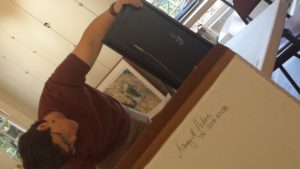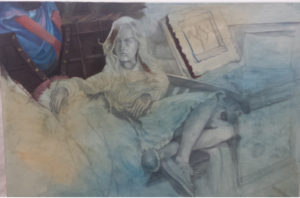Ahh, well. Today we’re gonna talk about something big: the Portrait Society of America. You see, I just came back from my 10th year at the event.
I’ve been looking at others’ pictures of features offered there, and I have to ask. Were you at the same conference? I’m beginning to conclude this annual is not just one event, but multiple conferences rolled into one. The unifying code was the featured honoree, Richard Schmid, so that’s definitely where I was, in the right place. It’s just that in every corner of the Atlanta
Hyatt at Buckhead on the lower level, something else was going on which could be a whole conference. There were little groups painting a model–oh, that’s besides the huge Thursday evening Bake-Off, excuse me, I mean Face-Off, with at least 4 models and fifteen or more painters of some renown. We lifetime portrait painters, gallery owners, and occasional newcomers to the scene got to walk around in circles the whole evening watching how they all progressed. Or sit in one space and watch only one.
That event insures we’ll make it to the conference early.
Those paintings are then sold at silent auction. At the 6 x 9 auction-of-another-kind on Friday evening, the price remained the same, the identity of the painter was hidden, the mystery was how quickly you could pick the number off of one of many boards containing maybe 25 of these, and actually get the painting. I buy one every year, but this year, I didn’t go. Here’s the reason: I was so bombed out with the mega sessions in the big auditorium with big art celebrities and those teaching from apostolic ‘schools’ of those great teachers, I just had to collapse before enjoying the evening session with artists demonstrating. (Later, I found out I could have gone into another room and had a whole other experience.) Actually, I already knew that from Gordon I met in the great lounge of the Onyx’s legère restaurant and bar. He was a scheduled model for a session.
The kick-off address with Jeffrey Hein was phenomenal. His theme was color, and several neighbors I sat next to in the huge auditorium and I agreed, just one of his revelations/our discoveries more than paid for the price of the tuition there. Transforming–and he had pictorial aides to proves his theses, which spoke volumes. One slide I caught, but one I should have taken a picture of, but the camera just didn’t happen to be in my hand for the few seconds the slide showed. 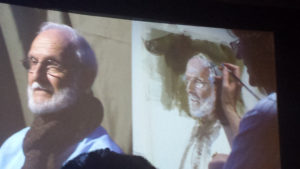
I had an amazing lunch with two other artists and discovered near the end that that was the time critiques were being given to portfolios, so I headed off to that with my cellphone and my ipad. The pad wouldn’t dance with the hotel’s wi-fi, so I switched to my cell phone, while waiting for whichever person was next available to critique. What a divine appointment, I actually got the lady I’d talked with earlier in friendly terms down front, and had instantly loved her because she appreciated my slightly wack humor. Well, wouldn’t you know it, the same principle Jeffrey Hein pointed out was the one place (in my dark’s) that she kept referring to: the same principle. And another area where my overly fix-it mode had made strokes in the hair too same-same. It was at the end of the whole critique session, so I got laid-back treatment which helped me more than I can say. I can even remember it without having written it down (although I did, of course.)
I always look forward to Mary Whyte’s presentation. I loved the watercolor session in which she painted on stage from the model in the picture. I follow her on line, as well. Seeing the sketchbook of Edward Raymond Kinstler on big screen is also incredible visual stimulation, and I enjoyed his stories of painting the greats like Kathryn Hepburn and Tony Bennett.
The break-out sessions were phenomenal. I participated in the one led by Kate Stone and Tony Pro. (Why couldn’t my name have been Joanna Success?) We had three nude models to choose from, or follow the teachers around and watch them work, or whatever. I came away with four new pencil drawings this year, two from this session and two from the on-stage demonstrations. You couldn’t tear me away from them. I took exactly the right tools, ones you can maneuver in a tight auditorium space with the three hands I’ve always got going. I never even spilled my coffee this time. The other was a forum of the portrait painters who sell at mega prices and travel all over the world doing so, who were kind enough to display and tell their secrets on the equipment they carry with them and pack into their plane, to the contracts they use, to what portrait painting conventions to use and what never to use. Information overload is what I love–and I devoured this like a cannibal fresh meat.
I don’t know when I dipped into the superior products arena and quickly bought some more brushes from one of the vendors–I had fully intended to talk to George O’Hanlon, owner of Rublev paints and buy the chromium yellow they’d just been talking about on Facebook, but alas, I didn’t get to go back. Too much to do. Too many faces to observe. Too many seminars at which to dance. Please understand, for an INTP Introverted-Intuitive-Thinking-Perceiver, Myers Brigs), there is never “too much or too many.” They do, however, give out at too much extroversion and show touchy-feely strain early. Please, you must forgive them for that; it’s how they were made.
Then there is the International winners’ exhibit in a separate space which you can visit as many times as you would like during the conference, but in which you get to have happy hour and speak to the painters on a Friday evening. Truly phenomenal, these paintings, ranging from huge to one mini this year from Anna that I absolutely adored (as well as her). We had to wait until the Emmy’s on Saturday night to know just which place they had won, and which received people’s choice. Don’t laugh at my calling it the Emmy’s; we listened to the Curator of Atlanta’s High Museum who spoke to us with an invigorating message on Brave Spaces and honored Richard Schmid who has made it to the top of the art and portrait arena. Worldwide, folks. As to the winning portraits, the styles ranged from moody to crisp, high-focused realism to diffuse, but the winners won out over 2000+ entries and deserved all the applause they were given, plus more.
Before my second break-out session, I got to talk with Virgil Elliott of Traditional Oil Painting fame. He didn’t come on his motorcycle this year, but flew in from California. Well, I got my own private session with him–an opportunity of a lifetime. He was not presenting this year, only signing his books. Which is another area you could spend a conference on, although I didn’t see as many doing that this year as in former years. I got to ask Virgil in-depth questions that you can pursue in person like you can’t on Facebook before others needed his audience and I needed to go to my break-out. I loved the session I was signed up for, but somehow, I didn’t want another demonstration, so I moved one door down, paused at the forum talking to a Raleigh compatriot, Luana Lucona Winner, and snuck into it, uninvited. I found out later there were several of us who had. Edward Jonas of the teaching faculty was on the panel; Ed is always so accessible and kind.
We connected with Virgil again at the end of the conference. Four of us went by hotel car to Marta, rode Marta to the airport, and got to talk in-between. I didn’t envy Virgil having to carry his guitar, but I see by Facebook this morning that he made it back. (Hey, Virgil!)
It was good to see that the young disciples of Richard Schmid’s lifetime accomplishments–each going in their direction–are making a second wave of younger teachers and keeping the organization revitalized. They were winning prizes and leading seminars and the inspirational hour…all wonderful, perhaps a changing of the guards.
At the end on Sunday, we got to listen to John Howard Sanden tell his fascinating stories of painting Bush’s portrait 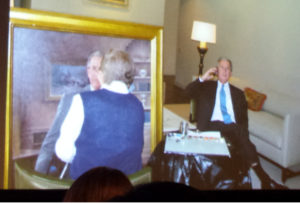 and going to the White House unveiling, and of his eight full-blown attempts to get just the right moment. Sanden is famous for his paintings and books, one of Billy Graham I have seen at The Cove, just outside Asheville. Of painting the richest women in the world. He confessed that his life work had been only 350 portraits as compared to some in our midst’s 600 already. He, like many other artists there, had been a teacher at The Artist’s League, and instrumental in turning the small class format for learning portraiture around a model and a painter into the auditorium format which turned into the: you guessed it….the Portrait Society of America (see their materials for real facts and answers to your burning questions). Several of us deemed this year’s conference of some 800 folks different. Mysteriously wonderful.
and going to the White House unveiling, and of his eight full-blown attempts to get just the right moment. Sanden is famous for his paintings and books, one of Billy Graham I have seen at The Cove, just outside Asheville. Of painting the richest women in the world. He confessed that his life work had been only 350 portraits as compared to some in our midst’s 600 already. He, like many other artists there, had been a teacher at The Artist’s League, and instrumental in turning the small class format for learning portraiture around a model and a painter into the auditorium format which turned into the: you guessed it….the Portrait Society of America (see their materials for real facts and answers to your burning questions). Several of us deemed this year’s conference of some 800 folks different. Mysteriously wonderful.
What a historical moment of intersections this was. How delighted to be a portrait painter I was when I woke up this morning. I think I am in one of the most important arenas of the world, that of portrait painting. See you next year in D.C.
Learn more »

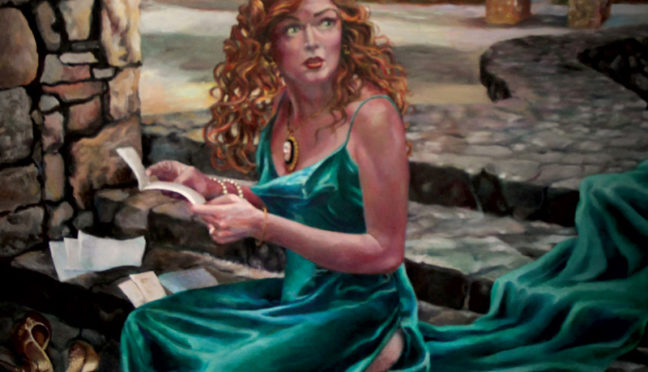
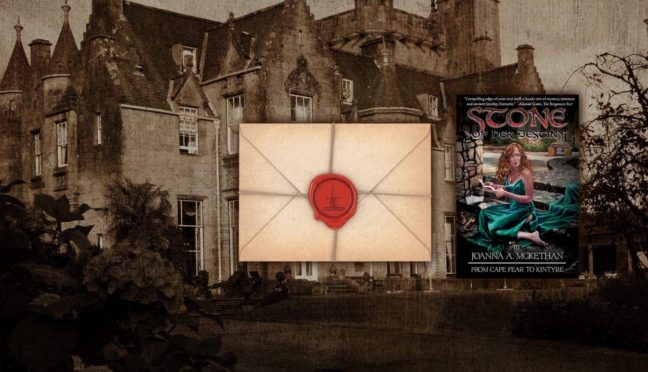
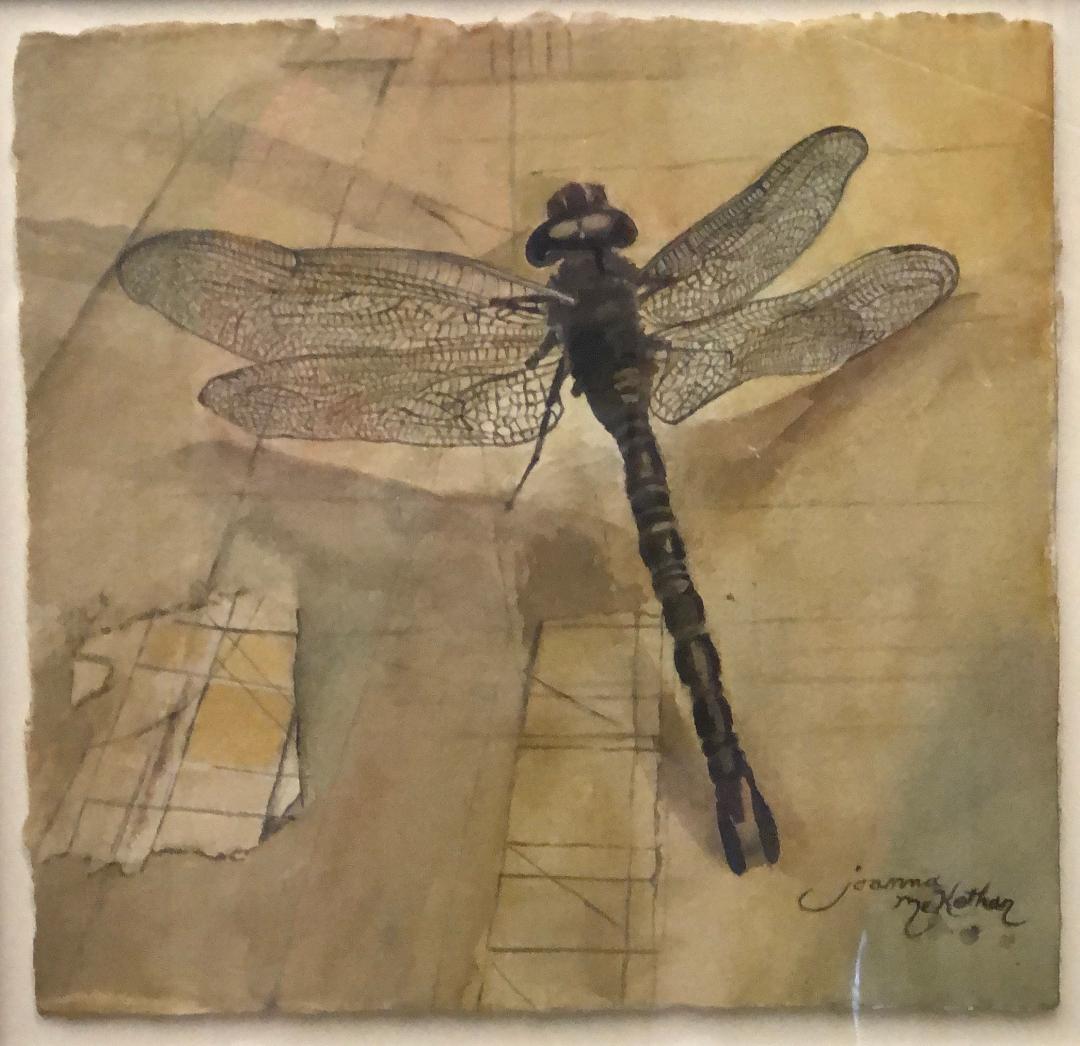
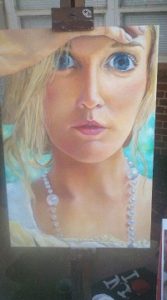

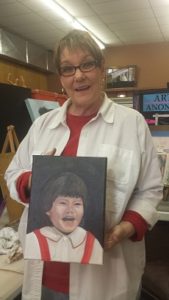
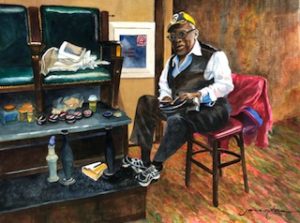
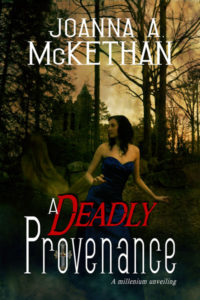
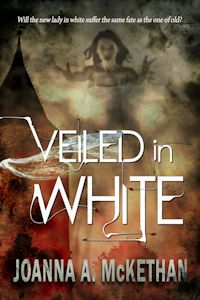
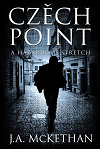

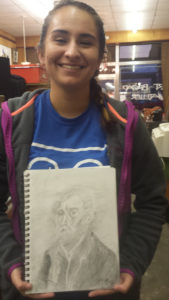
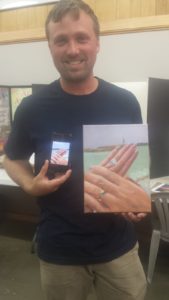

 and going to the White House unveiling, and of his eight full-blown attempts to get just the right moment. Sanden is famous for his paintings and books, one of Billy Graham I have seen at The Cove, just outside Asheville. Of painting the richest women in the world. He confessed that his life work had been only 350 portraits as compared to some in our midst’s 600 already. He, like many other artists there, had been a teacher at The Artist’s League, and instrumental in turning the small class format for learning portraiture around a model and a painter into the auditorium format which turned into the: you guessed it….the Portrait Society of America (see their materials for real facts and answers to your burning questions). Several of us deemed this year’s conference of some 800 folks different. Mysteriously wonderful.
and going to the White House unveiling, and of his eight full-blown attempts to get just the right moment. Sanden is famous for his paintings and books, one of Billy Graham I have seen at The Cove, just outside Asheville. Of painting the richest women in the world. He confessed that his life work had been only 350 portraits as compared to some in our midst’s 600 already. He, like many other artists there, had been a teacher at The Artist’s League, and instrumental in turning the small class format for learning portraiture around a model and a painter into the auditorium format which turned into the: you guessed it….the Portrait Society of America (see their materials for real facts and answers to your burning questions). Several of us deemed this year’s conference of some 800 folks different. Mysteriously wonderful.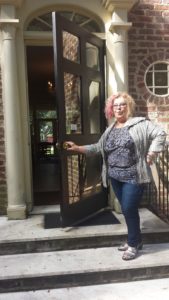 Plus, I got to demonstrate my watercolor skill on the following day, Saturday, April 8, from 10 am until 4 pm, during the 2017 Southern Pines Home and Garden Tour.
Plus, I got to demonstrate my watercolor skill on the following day, Saturday, April 8, from 10 am until 4 pm, during the 2017 Southern Pines Home and Garden Tour.